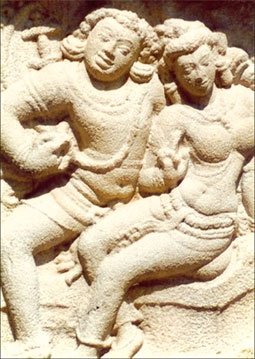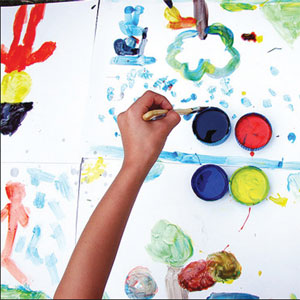
Let’s save water !
Winner:
Water is a very precious natural resource. Many of you must be aware
that we can live without food for a few days, but we cannot live without
water even for a day. All the animals and plants need water for their
survival.

Three fourths of the Earth’s surface is covered with water, yet only
one per cent of this water can be used for drinking.
The rest is either sea water or polluted water.
So ,it is important to save every drop of water we have for our
day-to-day needs without wasting it.
Rain is the main source of water. Rain water falls into water bodies
such as lakes, ponds, waterfalls and rivers and keeps them full.
We should purify the water we take from the water bodies before we
use if for drinking. In the not so distant future we may have to face
severe problems due to the lack of water.
When people pollute and destroy the environment, it affects the water
cycle. Lack of rain leads to water shortage. So, we should always
protect water resources which we already have and conserve them.
We must always use water safely. We should not leave taps running
while using water,especially when brushing our teeth. We have to open
the tap only when using it . We must close the taps tightly after we use
them and also take steps to fix all leaking taps. We should use water
very carefully. We should save each and every drop of water because it
is a dwindling resource.
G.D. Isuru Suban Hansaja,
Grade 5,
JMC International College,
Kandy.
Annual school trip
Winner:
The annual school educational trip this year was to Anuradhapura. I
could not have a good night’s sleep before that eventful day, because I
was dreaming so much about this exciting trip.
 Inspite
of the darkness of the early hours of the morning, I had to rush to
school because we were asked to report at school long before the
scheduled time for the departure of the buses. After obtaining the
blessings of the Buddha at the school shrine, we took our seats in the
buses. Inspite
of the darkness of the early hours of the morning, I had to rush to
school because we were asked to report at school long before the
scheduled time for the departure of the buses. After obtaining the
blessings of the Buddha at the school shrine, we took our seats in the
buses.
Like a happy band of picnickers, from the very beginning of the
journey we started to clap and sing. When the sun began to light up the
surroundings we could see the endless green paddy fields everywhere.
After traveling for a while we could see a koth kerella (pinnacle)of a
dagoba in the far distance, beyond the fields. When the teachers
realised that we were close to our destination they requested us to be
quiet. We were not willing to stop the singing, however as they
emphasised and stressed the need for disciplined behaviour in a sacred
area, we immediately stopped singing.
All the buses stopped at the car park. We had to walk calmly and
patiently in a queue to the monastery which was on a picturesque rock.
It was the Isurumuniya temple where there are many famous arts and
crafts. The temple is located adjoining the Tissa Wewa, a magnificent
irrigation reservoir.
There were many aesthetical ruins at Isurumuniya. This attractive
place has been built by King Dewanampiyatissa. We saw the famous
sculptures of the Isurumuniya lovers, the royal family of King
Dutugemunu and some tuskers bathing and playing in a pond.
We also visited Mirisaveti, Abhayagiri, Jethavanarama and the sacred
Ruwanweli Maha Seya. When I viewed the huge structures I was amazed.
They were not just dagobas but magnificent creations. I found it hard to
imagine how our ancient kings built these awesome structures. I felt so
great and proud about them and offered my gratitude to them. I was also
very proud of my nation. After viewing these magnificent places we also
visited the sacred Jayasrimaha Bodhi. I heard a sweet melody in the
rustling of green leaves in the cool breeze blowing across the Tissa
Wewa. After invoking the blessings of the noble tree we began our return
journey with great joy having gathered a lot of knowledge about our rich
heritage. We were able to reach the school at night without any mishaps.
Yasasi Liyanage,
Grade 10-C,
Vidyakara Balika Vidyalaya,
Maharagama.
Why I like drawing
Winner:
 What’s
a hobby? It is generally an activity a person does as a form of
relaxation during leisure. A hobby often gives great pleasure and even
enhances the knowledge of the person who engages in it. For some a hobby
becomes a form of employment. What’s
a hobby? It is generally an activity a person does as a form of
relaxation during leisure. A hobby often gives great pleasure and even
enhances the knowledge of the person who engages in it. For some a hobby
becomes a form of employment.
There are many activities people do as hobbies. Reading books,
magazines or newspapers, playing various games, cycling, gardening,
watching TV or films, listening to the radio and drawing or painting are
some of them.Among them what interests me most is drawing.
Drawing is a wonderful hobby that benefits me in various ways.
Firstly it is an activity that pleases my mind. When I look at the
drawings I have done my mind is filled with immense satisfaction. When
somebody admires the pictures I have drawn, the feelings that flood my
mind cannot be expressed in words.
Drawing is not only a hobby, but also a good means of earning an
income. When we draw beautiful pictures, we can sell them and earn
money. We can also exercise our mind when we engage in drawing. It keeps
us healthy and happy. That is why I think that drawing is a wonderful
hobby.
K.P.K.D.C. Senarathna,
Grade 11,
Sanghabodhi College,
Nittambuwa.
My first journey on the Southern Expressway
Winner:
During the last holidays, our family sat together one day after
dinner to make plans for the usual family trip. Many suggestions were
made. We wanted to do something new and exciting. Every proposal was
turned down by my father. Finally out of exasperation, my mother
said,“We might as well make a trip on the Southern Expressway”. This was
eagerly taken up by everyone.
On the day of the trip I rushed out of bed at about four o'clock in
the morning. I didn't have even a wink of sleep due to the excitement
generating inside me. I had heard all the wonderful events that led to
the construction of this masterpiece, and was eager to see it.
The Southern Expressway is the first expressway in Sri Lanka. It
connects Kottawa to Matara (126 km) and the construction of the section
from Kottawa to Pinnaduwa (Galle) has been completed as a dual
expressway with a four lane facility. The Galle Port access road has
been built to connect the city of Galle to the Pinnaduwa interchange.
The Expressway from Kottawa to Pinnaduwa (Galle) was ceremonially
opened by President Mahinda Rajapaksa on November 27, last year. The
travel time from Kottawa to Galle is about one hour. We could travel at
the speed of 120 kilometres per hour.
We decided to travel up to Galle and return the same day via the
expressway. We had some relatives living in the Galle Fort and a family
visit was long overdue.
When we arrived at the toll gate at Kottawa the sight that met our
eyes was awesome. It was like a scene from the movies. Driving along the
road was so smooth and fast. The flatness of the road frightened me a
little. Everything looked solid and concrete. There were no bullock
carts, no children playing on the road, no trishaws or motorbikes. It
was a strange experience for all of us. Travel in Sri Lanka usually
involves taking roads that run through crowded cities and traffic jams.
This can be quite dangerous as people might cross the road suddenly.
I could feel the speed of our vehicle when I closed my eyes. It was a
bit scary. We have never travelled at that speed before. Just a burst of
a tyre may roll our vehicle off the road.
We did not feel any of the usual tiredness or anxiety driving in busy
roads. In a flash we were already in Galle and had very little time to
enjoy the drive. Now, we were eager to get back on the Expressway and
experience the comfort and joy of the drive and the scenic beauty. We
hurriedly finished our visits and got back on the road once again.
It was already late evening and darkness was creeping in on us. A
bright luminous paint lit up the road.
As we entered the Expressway at Kottawa, we saw the next road, the
outer circular road around Colombo which would connect to the airport
being constructed.
Once the road is completed people from Colombo can get in at any
entry point and tourists and business people can skip Colombo entirely
if they desire.
Needless to say, it was a tremendous experience; one that brought
excitement at every moment.
Truly, we must thank President Mahinda Rajapaksa for providing us
with such a facility.
Fathima Nuha Riyard,
Hejaaz International School,
Dehiwala.
The horse , a true friend
Winner:
The horse is a tall, four-legged animal. It has a smooth coat which
is generally brown in colour. However, they can also be brown or white,
black or pure white in colour. It has short pointed ears and small eyes.
Along its long, thin neck, it has a tuft of hair which is called the
mane. The horse has cloven hoofs.A horse can be used for riding, drawing
a carriage or for ploughing the fields. It can carry heavy loads because
it is very strong. The horse can also run very fast. Horses of very good
breed are used for races.
A horse is friendly by nature. It is loyal and faithful to its
master. If treated kindly, it will be ready even to die for its master.
There have been many people who have been saved from death by their
faithful horses.
In the past horses were used to carry soldiers to the battle field.
They were known as war horses. They galloped away and carried their
masters to safety when they were wounded in battle.
As the horse is a noble animal, men should treat it kindly .It is
only then that a horse will be a true friend to its master.
Pravesha de Silva,
Grade 6,
Good Shepherd Convent
Panadura.
The animal kingdom
The animals of the world can be divided into groups. This makes it
easier for us to study them. We can group animals according to where
they live or by their shape or behaviour, or by what they eat.
Scientists divide animals into two large groups; vertebrate and
invertebrate those with a backbone and those without. Fish, amphibians,
reptiles, birds and mammals are animals with a backbone. Insects belong
to a group of animals without a backbone.
Fathima Safiyyah Ashker,
Grade 4T,
Ilma International Girls’ School,
Thalakotuwa Gardens. |

